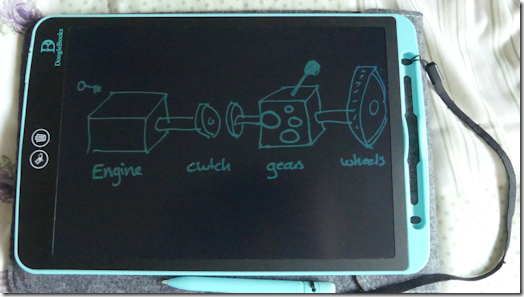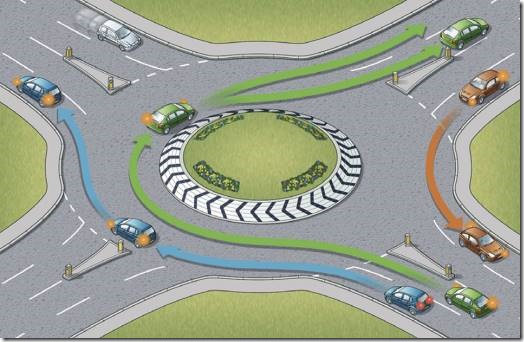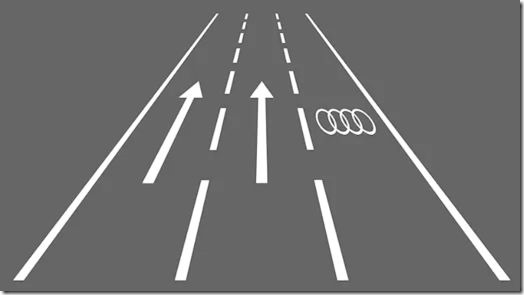 Instructors have recently been off on one again about how much you can earn as an ADI.
Instructors have recently been off on one again about how much you can earn as an ADI.
This time, the argument revolves around the latest advertising strapline from a training company that you can ‘earn £50k and work hours to suit yourself’ as an ADI.
I have explained how a driving instructor’s finances work many times. In a nutshell, your earnings (gross profit or wages) are however much money you take for lessons in a whole year (your turnover) minus however much money you spend in order to deliver them (your expenses or overheads) in the same period. That’s it. No other combination of kiddie maths has any relevance whatsoever. You do not take tax and National Insurance off, since those are likely to be different for everyone.
As a rough guide, the expenses figure for a typical ADI is likely to be around £10,000 per year. The real problem is that many instructors seem to spend the better part of their time trying to convince themselves and everyone else that their expense figure is much lower – usually to try and ‘prove’ that franchises are bad. But they are either lying, or just extremely clueless. However, if we ignore the lies, in order to earn an actual wage of £50,000, you would need to have a turnover of £60,000 per year. If you charge £30 per hour for lessons, that would equate to 60,000 divided by 30 = 2,000 hours of lessons per year.
And 2,000 divided by 52 weeks = 38.5 hours of lessons per week.
If you charge £25 per hour, it would equate to 2,400 hours a year, and 46 hours a week.
Reality Check #1
If you can charge £30 or more per hour, that’s fine. However, the vast majority of ADIs cannot. Most are in the £25-£30 range, and some can barely get away with that. A few – very few – instructors in wealthy southern areas can apparently charge up to £40, but they are not the norm by any stretch of the imagination. Christ! I am in a relatively affluent zone, and my hourly rate is £30 (the high end), but I am not so stupid as to believe people in Liverpool or Birmingham could charge that, anymore than I am stupid enough to believe I would survive if I started quoting £40.
I actually wrote about this just over a month ago when the same argument kicked off in a slightly different guise. In spite of the usual nonsense being claimed across social media, only a handful areas can command hourly rates above £30. And even those are often heavily discounted by block bookings to well under £30.
Those who are fortunate enough to be able to charge above-average hourly rates seem to think everyone else could, too. That is complete bollocks. If everyone in an area is charging £25, if you up your prices to £35-£40 then you may as well give up this job now. I didn’t work out a ‘national average’ from the survey I did in the link, above, but looking at the figures it is clearly below £30 and nowhere near £40.
In the example calculation I gave, for every £1 below £30 you charge, you need to work an average of approximately one extra hour per week on top of the 38.5 needed for a £30 lesson rate in order to turn over £60,000.
Reality Check #2
You cannot rely on getting 38.5 hours of work every week – and that is true no matter how much you charge. Anywhere near 40 hours is a nice-to-have, but it isn’t a take-it-whenever-you-want-it option. This job doesn’t work like that.
If you target 38.5 hours hard, weekly variation in your diary means that sometime you’ll only manage maybe 25-30 hours, whereas other might be as high as 50. And 50s are a killer, believe me. Been there, done that, got the T-shirt.
If you are normal, you will take a holiday at some point, and you will want Christmas off. Even if you consider yourself to be in Superman territory and forego holidays, and work over Christmas, you will not get 38.5 hours during holiday seasons, because pupils will want the time off. Assuming you take 4 weeks off in the year (and that includes if it is spread out over the whole year into an hour here and and hour there), that will mean you have to achieve an average of nearly 42 hours every other week if you charge £30. If you’re charging £28, you’d be aiming for 45 hour weeks. And if you’re charging £25, you’ll be targeting close to 50 hours a week.
Reality Check #3
Shit happens. Learners get ill. You get ill. Learners have family problems. You have family problems. So learners cancel lessons – as you may have to. Every cancelled lesson you don’t fill – and you won’t be able to fill all of them – will have to be added on somewhere if you want to clear £60k. So the average weekly hours you need to work will have to rise still further.
Reality Check #4
Doing 38.5 hours a week in an office is not the same as delivering 38.5 hours of driving lessons (with travelling time in between). In an office, you’re in there for about 7.5 hours a day Monday-Friday. As an instructor, delivering 7.5 hours of lessons Monday-Friday would keep you away from home for 10 or more hours a day. An office job is not the same as being a driving instructor. With knobs on. And then some.
Reality Check #5
There is absolutely no way you can work a 38.5 hour week – every week – as an instructor without running the risk of making yourself ill, or at least becoming tired and risking delivering below-par lessons. As I said, I’ve done it, and it’s fine for a while – until it catches up with you. I was aiming for 40 hours, and I was sometimes hitting 50. But after six months I noticed I was getting tired, and it was getting in the way of my life outside work (my music concerts, etc). I deliberately pulled back. If you have a family to look after, you have no chance.
Being an ADI is inherently a lazy job – you’re sitting down all day. Don’t kid yourself that walking to the bank at lunchtime is ‘exercise’. It’s better than nothing, but it isn’t much after all is said and done. But if you’re desperately trying to get around 40 hours, you simply won’t have the time to exercise. Even if you try, you’ll be rushed and stressed – which cancels out the ‘exercise’ part.
When I do a 40+ week now, it is just for a short time, and not by design. And I schedule an hour and a half in the gym three times a week regardless. It’s in my diary, and is not bookable for lessons. Frankly – and arguably – I should have done that when I started out in this job. At the very least, I should have started sooner. The COVID lockdown made the decision for me – and I am grateful to it for that.
Reality Check #6
Many things in life are hypothetically possible, but that does not mean they are also practically probable. I mean, if you worked 18 hour days and charged £40 an hour, all your pupils lived within 15 minutes of each other, and you didn’t take holidays, then you’d turn over something like £200k a year, leaving you with a wage of around £180k. I can assure you that you won’t find (m)any ADIs who have achieved that just by giving normal lessons, and even fewer who do it year after year.
There’s no absolute physical barrier to doing that, of course. It’s not illegal, and in terms of time and sleep it doesn’t break any universal laws of physics. Hence, it is hypothetically possible. But there are so many other much more likely factors involved that is is virtually impossible in the practical sense. You will get tired. Even exhausted. And that really would impact your health. Trust me, it would.
The situation with 40 hours weeks is the same. It just takes a bit longer to hit that ceiling.
Reality Check #7
You are not ‘working hours to suit yourself’ in the sense the advertising strapline intends it if you are doing anywhere near 40 hour weeks. The purpose of that claim is to imply you can have weekends and/or evenings off. It doesn’t tell you that if you do reduce your hours to fit your family or social life, your earnings take a hit, and that the more you ‘suit yourself’ the less you will earn relative to that ‘up to £50,000’ part.
A 40 hour week for an ADI is not the same as one for an office worker is. An office worker is in the office for 40 hours, and does whatever it is they do, much of which is office chit-chat. They go home at 5pm, and switch off until 9am the next day. They are off at weekends. If they don’t finish something one day, they pick up where they left off the next day.
A 40 hour week to an ADI means 40 hours of lessons. If the ADI works seven days a week, that means he or she will have to do 6 hours of lessons each day (or 8 hours if they keep weekends free). Some instructors claim all their pupils live near each other, so there is negligible travelling time involved between lessons. In my case, I allow between 30 minutes and 60 minutes to allow for traffic hold-ups and other issues. Sometimes, consecutive lessons will start from the same address, so there really is no travelling time – but it still takes up to 15 minutes to switch over unless I am being a total arsehole with a stopwatch to time lessons. Most lessons do require travelling time, and I am pretty certain that this applies to the vast majority.
If you have a 30 minute travel time, 6 hours of lessons will keep you out of the house for more than 9 hours (a 66-hour week). Doing 8 hour days will keep you out for over 12 hours (a 62-hour week). Yes, I know that looks odd, but it’s correct – just think ‘60 hour week’.
You would simply not have any appreciable time off with a 60 hour week.
But my overheads are less than £10,000 per year
This crops up time and again. It is invariably driven by the belief that since a certain ADI owns their car outright (and it is possibly quite old) it costs ‘nothing’. It is completely false to say this.
Even the most clapped-out ten-year old banger you have owned from new has a residual annual cost of at least £1,000-£1,500, and the vast majority of ADIs are not driving ten-year old clapped out bangers. However much you originally spent to buy the car has to be spread across the period of time you own it. If you paid £10,000 for it ten years ago, it is costing £1,000 a year to keep (just under £20 a week). And it has to be replaced sooner or later.
Most ADIs doing 40 hour weeks will have newer cars than that. They will be spending at least £5,000 a year on fuel (probably more), and at least £4,000 on their car (probably more). Those spending less because they have a clapped-out 10 -year old Corsa are not typical.
I’m turning work away
Yes. You are right now as a result of COVID. But you almost certainly weren’t before it hit in early 2020. And it will return to the same level at some point. The current demand is not a reliable indicator of the job. And that assumes no more lockdowns. It is utter stupidity to recommend this career based on the current demand for lessons.
I can charge £35 an hour
Good for you. But Liverpool (for example) is not the same as Hampshire (for example), and it cannot charge those prices. If you are suggesting Liverpool ADIs charge Hampshire prices then you are an idiot. They could not do it, and would go out of business if they tried.
40 hour weeks are no problem
For the vast majority – the vast majority – they would be if they were doing them all the time. I know this from experience – 40 hours is no problem to start with, but it catches up on you if it stays that way. And that’s the same for you, too. You just don’t realise it.
Once you learn to understand, the best part of being an ADI is that weekly hours fluctuate. Some weeks might be 40+ hours, but the ones that fall to 25 save your health.
In reality, you simply cannot work unlimited hours without it leading to problems. Not understanding or realising this is a problem in itself – especially if you like offering ‘advice’ to others.
Me, me, me – buy my coaching course
From what I have seen, a significant number of those advising Liverpool and Birmingham instructors that they can charge Hampshire prices also sell coaching courses. They’re the kind of people who see a sale in every question any ADI has, but since they are ADIs themselves, they’re not good sales people. They’re just ADIs who think they are good sales people.
You cannot raise your prices if you’re in an average £25 area to £35 overnight and expect to stay in business. You absolutely cannot.
 Ever since I became an instructor I’ve managed to get through a lot of notebooks. Anyone who does this job will know that you have to sketch a lot of things when you’re explaining stuff to pupils.
Ever since I became an instructor I’ve managed to get through a lot of notebooks. Anyone who does this job will know that you have to sketch a lot of things when you’re explaining stuff to pupils. This article was originally written in 2015. Prior to PayPal Here, I had used iZettle, but I had an
This article was originally written in 2015. Prior to PayPal Here, I had used iZettle, but I had an  I only wrote this at the beginning of May 2021, but it’s already worth an update as of late May 2021.
I only wrote this at the beginning of May 2021, but it’s already worth an update as of late May 2021.

 Had a funny one this evening.
Had a funny one this evening.